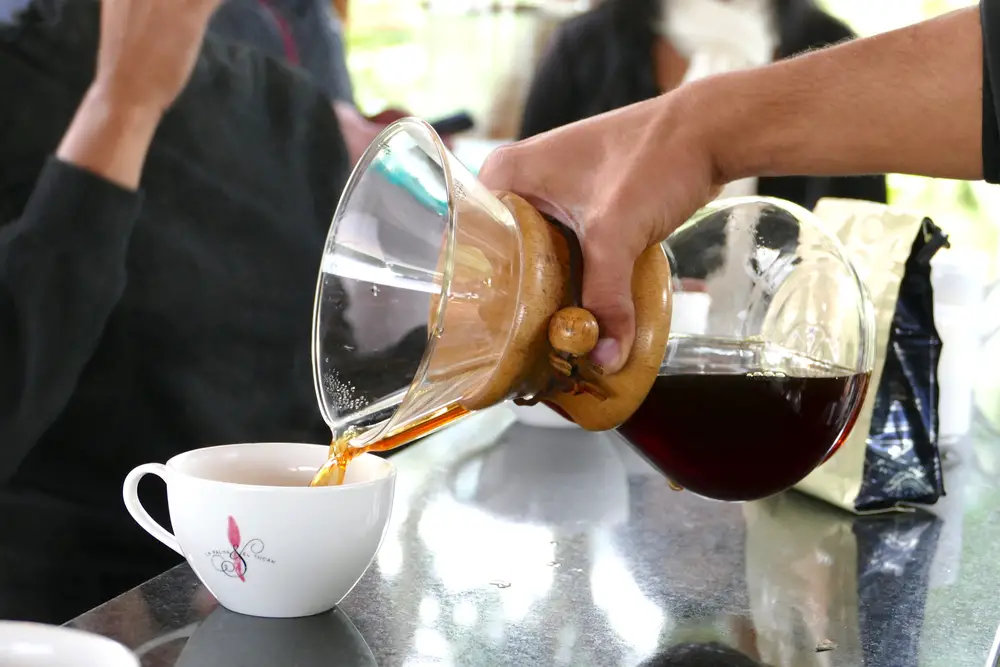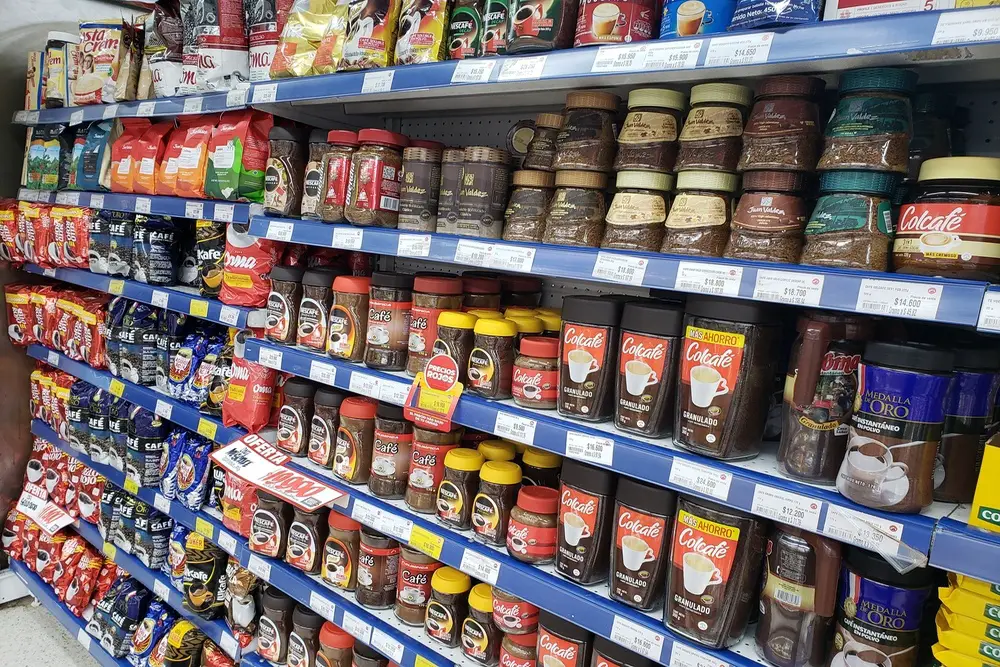Coffee from Burundi has gradually gained prominence in the coffee industry, particularly in specialty coffee. Because the coffee from the small African country is of high quality, as its geographical location offers ideal climatic conditions for cultivation.
Table of Contents
Business and Agroforestry
Businde is a community work for coffee and other cultures, which has been in operation since 2011. Since its inception, the agricultural production of this municipality has received several awards for the quality of the natural products harvested in this area.
There are also numerous villages in the region around the municipality of Businde where the locals grow coffee in their backyards. Since the farmers have no access to pesticides or artificial fertilizers, all these plants thrive as naturally as possible.
Because the resourceful locals use the unused coffee beans as a natural fertilizer for all plants. Therefore, much of the Burundian coffee is mainly grown in the backyards of farmhouses and on small farms.
In this way, a mixture of plant species grows in complete harmony in the farmers’ fields all year round. For this reason, in addition to coffee, mangoes, avocados, citrus fruits, pumpkins and many other crops are also grown, which is known as agroforestry.
In agroforestry, the plants form a symbiosis as they provide nutrients to the soil, which in turn allows for good growth of the trees, which then protect the plants from wind, solar radiation and even pests.
What does Businde coffee taste like?
The taste of Businde coffee is reminiscent of Loganas, a fruit that comes from crossing raspberries and blackberries. With strong fruit notes, this coffee is sweet and syrupy with a honey-like texture.
However, this coffee is quite full-bodied and has a medium to high acidity, which some say reminds them of the taste of Coca-Cola.
Coffee Profile Businde Coffee
| Variety | Red Bourbon |
| Processing | Washed of course |
| Country | Burundi |
| Regions of origin | Kayanza, Buyenzi |
| Altitude of coffee cultivation | 1650-1800 meters above sea level |
| Roast | Light to medium |
| Taste | Caramel, Cinnamon, Longan |
Business coffee in the cup
After brewing, Businde coffee exudes pleasant floral aromas and hints of sweet milk chocolate. In some cases, the intensity of the body can vary depending on the manufacturer, although it is often creamy as well.
In the mouth, the coffee shows a mix of citrus flavors like orange and sweeter flavors like apricot. Then, as the coffee cools, the signature notes of Red Bourbon appear.
Then other flavors like dark chocolate come to the fore and linger for some time after the coffee is finished.
Coffee cultivation and production in Burundi
Like other East African countries (e.g. Ethiopia), Burundi has climatic conditions that are ideal for growing coffee. The soils in Burundi are of volcanic origin and therefore have an abundance of nutrients such as nitrogen and phosphorus.
In addition, Burundi is located in a geographic area known as the Rift Valley, a mountainous area where the Congo and Nile river basins meet.
The water of these rivers is therefore one of the reasons for the great fertility of the African country’s soil. Burundi’s equatorial climate also has temperatures that vary according to the region’s altitude.
Thus, the average temperature in the flatter areas can reach up to 21°C, while in the mountainous area’s temperatures range between 10 and 20°C, which is ideal for coffee growing.
The rain is also on the side of the coffee farmers, because with an average of 1200 mm per year, the coffee harvest is almost guaranteed, since although it can be hot, the rain does not allow for drought periods, which would be fatal for the coffee tree.
For this reason, the different regions of the country have long been used for agricultural production.
But for more than two decades, the land in the north of the country has been used for the massive cultivation of coffee, which is Burundi’s most important export crop.
Peculiarities of Burundian coffee
One of the most important aspects of coffee production in Burundi is the washing and double fermentation of the beans.
This process is unique in the African country and guarantees the smooth taste of the end product (although the final taste of the coffee depends on the manufacturer).
Similarly, coffee production in Burundi is almost 100% focused on growing Arabica coffee, while only a small part of the effort is devoted to producing Robusta coffee.
Also, the most commonly grown Arabica variety is Red Bourbon.
About Burundi
The Republic of Burundi is a small country in the Great Lakes region of East Africa. Although the country is landlocked, part of its western border borders Lake Tanganyika.
Burundi borders Rwanda to the north, Tanzania to the south and east, and the Democratic Republic of the Congo to the west.
The country has a population of over 12 million people. In addition, around 87% of Burundi’s population live in rural areas.
This means that only 13% of the population lives in the 3 largest cities:
- Guitega, the capital
- Bujumbura, the most populous city
- And, Ngozi
Ethnic diversity and civil wars
There are 3 major ethnic groups in Burundi:
- The Twa
- The Tutsis
- the Hutu
So, these peoples have occupied the territory of Burundi for centuries. However, Tutsi hegemony over the other peoples has prevailed for at least two centuries.
That is, until the German and Belgian colonizers came in the early 20th century and occupied what is now Burundi and Rwanda. The territories occupied by these peoples then became known as Rwanda-Urundi.
Unfortunately, even after the European settlers left, there was political instability in both Burundi and Rwanda, even leading to civil wars.
When Europeans marked out the borders of African countries, they didn’t bother to check which peoples they were mixing together, in regions where they might not have previously coexisted.
That is, if the Hutus and the Tutsis were once enemies, this has resulted in them drifting apart and not inhabiting the same area. However, with the new borders, Hutu and Tutsi had to live together in the same country.
Worst of all, the colonizers considered the Tutsi to be the country’s elite, as they were slightly lighter in complexion than the Hutus, who were doomed to manual labor as they had darker complexions and complexions.
This led to two civil wars, the first in the 1970s and the second in the 1990s. The Twa have been hit the hardest because they have always been discriminated against by other peoples.
This has historically resulted in them having less access to resources. So, the Twa were the ones who had to farm the most to make a living.
And what does that have to do with coffee growing?
Today, Burundi is one of the poorest countries in the world, and according to the World Bank, Burundi had the lowest GDP of any country in 2021.
The country is mainly burdened by the following problems:
- Civil wars
- Political instability
- HIV
- And little access to education
Coffee plays an important role here, as it is estimated that at least 700,000 families make a living from this crop.
The country’s coffee production is estimated at 200,000 bags per year, which is 1% of world production and 93% of Burundi’s economy.
The export of green coffee is one of the most important drivers of the Burundian economy, even if it does not appear very high in international comparison.
However, its increasing rural presence and focus on agriculture has meant that many forested areas have been lost to deforestation.
While agroforestry is gaining ground among coffee farmers, conventional farming has historically had a negative impact on the country’s environment.
The role of government in coffee cultivation
It should be noted that coffee has only been cultivated in Burundi for a good two decades, so it is a relatively new crop.
But both the citizens and the Burundian government are interested in coffee because they see it as an opportunity to lift thousands of people out of absolute poverty.
This is how companies called Sogestals were created, state-owned companies that invest in the infrastructure that farmers need to sustain coffee production.
Because although farmers make up the majority of coffee growers, they generally only have small plots of land averaging no more than one hectare. Although they produce coffee because they are responsible for caring for the coffee trees, they do not have the means to operate a washing plant.
And this is where the Sogestals come in, as they fund the communal washing facilities, enabling the coffee production to be exported. Therefore, the small coffee producers share a space where they can finish the process of preparing green coffee.



